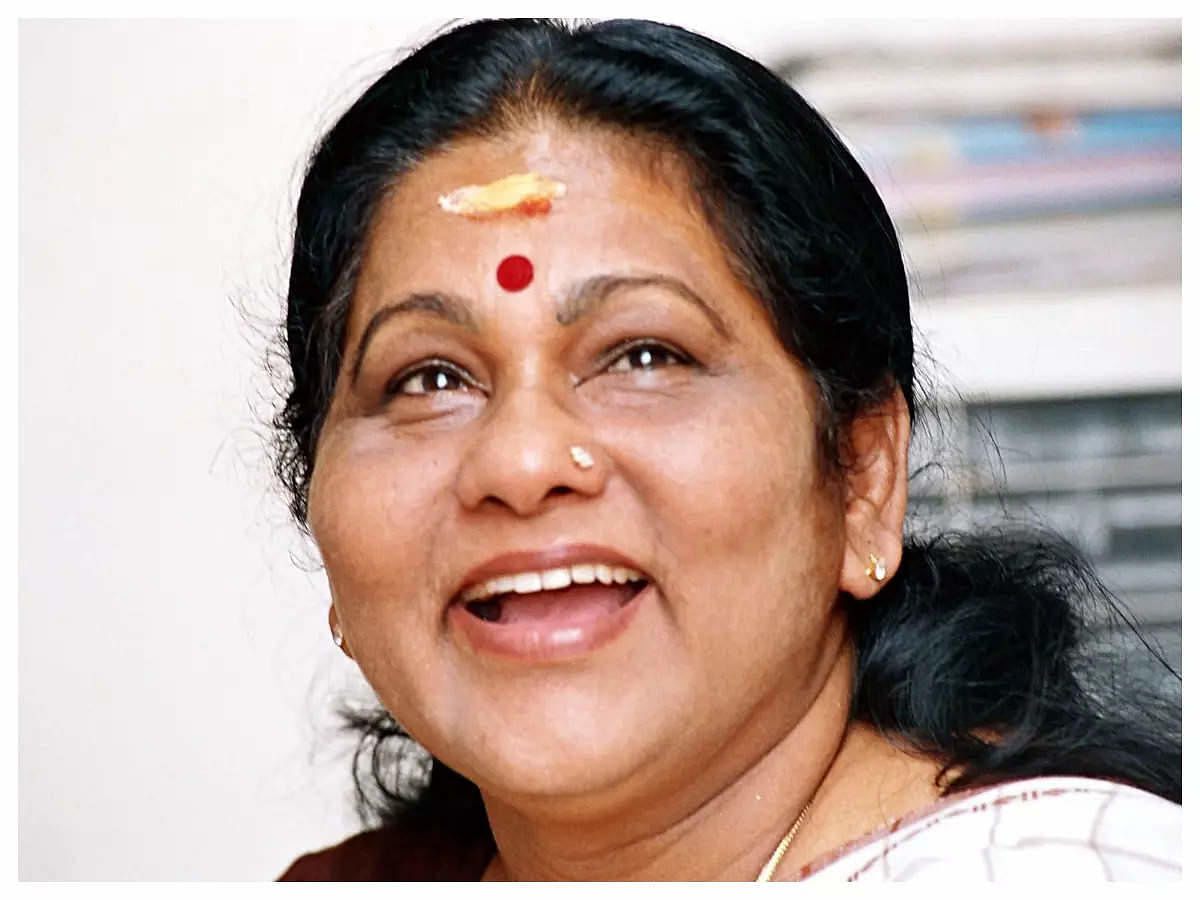
Most of the private texts I received following the passing of KPAC Lalitha, on Tuesday, were about how all this was moving agonisingly closer to the passing of a generation, of some of the finest actors in Malayalam cinema. This, also, was another grim marker in time, preparing us for closure to a collective memory of cinema-watching, spread over two decades. The 1980s and 1990s, when Lalitha was in prime form as an actor, is now a touch closer to being a distinct, independent sample size for cinema in Kerala. A slice of time filed and catalogued, a great thing of past.
This was a form of popular cinema diverse in scale and style but it, somehow, managed to retain elements of a common sensibility, with a group of gifted actors complementing its artistic ambition and elevating its ordinariness.
With many of them clocking 20-odd films a year in their prime, this was a prolific ensemble – Gopy, Thilakan, Nedumudi Venu, Sankaradi, Lalitha, Oduvil Unnikrishnan, Sukumari, Murali, Meena and Karamana Janardhanan Nair made a formidable line-up of actors. These were men and women in a hurry, often working with screenplays written on the sets, dealing with testing schedules and delayed salaries, rarely letting the standards slip. The actorly processes we hear about now were an indulgence not all of them could afford.
Lalitha, who died aged 74, was one of the wild cards of that pack. She switched easy from art-house to slapstick; she could defy the typical and when she was pushed – through her 550-film career, she did more than a handful of variants of the overbearing Christian matriarch and the bickering sister-aunt – to play by type, could still bring in a bit of edge to these composites.
The actor who was born Maheshwari Amma, started out with ‘Koottukudumbam’ (1969) but she peaked much later, on a shared timeline with peers, as sensibilities of the film society movement and subsequently, of parallel cinema nurtured a new mainstream, taking form in intense dramas and humour-laced, slice-of-life films. It was popular cinema, some of it even drifting to fan-service, which still required actors to be less limited by the written word, to behave, internalise and improvise.
Lalitha does some of that in the Mammootty-starrer ‘Kottayam Kunjachan’ (1990), as Eliyamma, a mother of two young women, constantly prodding her pacifist, Bible-quoting husband to hit back at his rich, oppressive neighbours. She’s a voice without a face in Adoor Gopalakrishnan’s ‘Mathilukal’ (1989). As Narayani, the inmate across a prison wall we never get to see, she forms a relationship with Mammootty’s Basheer, her voice ringing in for him shades of longing and a sense of eventual loss. In Sibi Malayil’s ‘Sadayam’ (1992), she’s a sex worker who represents a life that Mohanlal’s Satyanathan, her neighbour, abhors; she’s the object of the man’s derision that would later push him to murder, committed as an act of kindness.
The actor, for most of her career, had unremarkable material to work with but there was an unaffected honesty with which she inhabited these characters. She did her bit of television as well, rarely enthusing about working in a new medium and forthrightly reasoning that the move was more about the money than finding a new audience.
She was a regular with writers including A K Lohithadas and Sreenivasan and filmmakers Sathyan Anthikkad, Sibi Malayil and Priyadarsan, all exploring this new cinema with varied intent and style.
Her comic talent was used extensively by writers; many of them often wrote parts with her and Innocent, as a pair, in mind. Theirs was an association for the ages, consistently hitting the highs in films including Gajakesariyogam (1990), Sasneham (1990) and Manichitrathazhu (1993). Lalitha felt that working with familiar crews made her perform better. She has spoken about Anthikkad letting her be on sets for days without work, giving her time to settle down before asking her to do the more intense scenes.
Lalitha’s early initiation to the stage with the Kerala People’s Arts Club (KPAC), a popular Left-affiliated theatre collective, would precede her name like initials. The transition from theatre, however, to the subtleties of this new approach to acting on film was not without its difficulties. She believed that performances of the actors she was working with conditioned her to the change and, in turn, helped her develop her own style.
It’s tempting to imagine one of our most influential acting traditions taking shape through exchanges among competent artists, none of them burdened by their methods, prompting, feeding off and influencing each other.
Lalitha’s collaborations with Thilakan were consistently effective. ‘Spadikam’ (1995) was shot when the two actors were not talking to each other, following what she called a “silly fight” but the intensity of their performances, as hostile father and benevolent mother to Mohanlal’s recalcitrant son, never drops.
Two National Awards for the best supporting actress – for ‘Amaram’ (1991), directed by the late Bharathan, her iconic filmmaker husband, and ‘Shantham’ (2000) – later, Lalitha, still, chose to not complain about not being offered lead characters. Her work ethic sounded astoundingly simple, barely giving us a hint to her career choices or what constituted her preparations for a character. She believed that acting was the only thing she did well – it was work, something that she just did and getting better at that was not an option, it was necessary.
(The writer is a senior journalist based in Bengaluru)